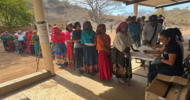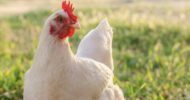Serikat Petani Indonesia (SPI)
(Original version in Bahasa Indonesia is available here)
24 November 2009
The Government of Indonesia's (GoI) plans to give the green light to national and foreign investors to invest in food crop agriculture is something that raises concerns. This situation will hamper the effort to give access to land for landless agriculture labor. One of the issues that Indonesian agriculture has until today is a very small average land ownership which is 0.3 hectare. Seeing from the economic scale it is very difficult for Indonesian peasants to improve their welfare in this condition.
Henry Saragih, Indonesian Peasant Union (SPI) chairman laments the GoI strategy to boost national rice production through the food estate program. The implementation of food estate contradicts with the government statement to improve people’s economy especially peasants’ economy.
According to Henry, the food estate will shift the character of Indonesian food crop agriculture from family based agriculture into corporate based food and agriculture production. It will weaken the state food sovereignty.
Furthermore, Henry said that huge rice production growth in the past two years still needs to be questioned. From SPI findings there has been no significant production growth. The average production growth is still 4.06 tonnes per hectare.
Meanwhile in several areas of rice production centre in Java namely Bogor, Cirebon, Pati and Kudus the production is lower then 4 tonnes per hectares. The low production is happening due to many factors from small land ownership to the problem of flood and drought.
Another reason why the claims of rice production growth need to be questioned is because the situation is totally contradicted with the fast rate of agriculture land conversion that are up to 100,000 hectares per year. On the other hand new paddy fields only grow am average of 35,000 hectares per year. “Strangely the report of harvested area of rice is not declining, but tends to be increasing,” said Henry, questioning the report.
“It is true that the government try to increase the national food production especially rice. But, unfortunately, government is doing it through food estate program. While the main problem is actually the peasants’ small ownership of agriculture land,” adds Henry.
Elisha Kartini, SPI National Policy Research staff said, “The Investment Law and all the derivatives opens a bigger door for investors to control the agrarian resources. The Presidential Decree on the Focus of Economic Program 2008-2009 includes the regulation about Big Scale Food Investment (Food Estate). The Decree in the government perspective aim to answer to problem of national food supplies by giving the chance to companies and investors to develop food “plantations”, said Kartini.
Furthermore, "Presidential Regulation No. 77/2007 on the List of Closed and Open Business Fields also mentions that foreign investors could also have 95 percent share in the rice crops agriculture. The regulation will definitely hit hard the 13 million small rice peasants who have been the main food producers. Even worse since 77 percent of the rice farmers are small farmers with land ownership less than 0,5 hectares," adds Kartini.













